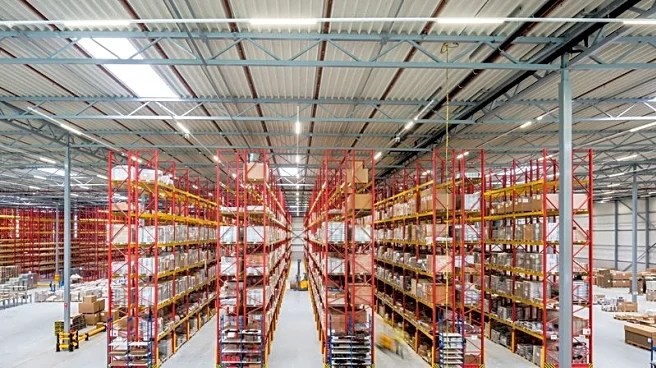What's Happening?
United Parcel Service (UPS) is grappling with challenges that may prevent it from achieving its 2026 targets set during its 2024 investor day presentation. The company is facing tariff uncertainty and overcapacity in the small package segment, which are impacting its performance. UPS had initially aimed to grow in higher-margin markets like small and medium-sized businesses and healthcare. However, excess capacity built during lockdown periods is now reducing as demand improves. Management's investments in productivity enhancements are intended to lower costs and enable facility consolidation. Despite these efforts, UPS has had to adjust its guidance due to shifts in customer preferences and increased competition from new e-commerce entrants.
Why It's Important?
The challenges faced by UPS highlight the broader impact of tariff uncertainties and market dynamics on the logistics industry. As tariffs affect international trade routes, companies like UPS must navigate complex geopolitical landscapes that can disrupt operations and profitability. The overcapacity issue underscores the need for strategic adjustments in response to changing market conditions. UPS's focus on reducing reliance on low-margin Amazon deliveries aligns with its strategy to improve profitability. These developments may influence investor confidence and require UPS to reassess its capital allocation strategy, potentially affecting its stock performance and market position.
What's Next?
UPS plans to reduce its reliance on Amazon delivery volumes by 50% by mid-2026, aiming to improve profitability and delivery quality. The company is committed to cutting $3.5 billion in expenses, aligning with anticipated volume reductions. However, ongoing tariff conflicts and a weak SMB market pose challenges. UPS may need to reset investor expectations and consider cutting dividends to free up cash for investments in healthcare or network technology. Stakeholders will be watching closely as UPS navigates these challenges, assessing its ability to adapt and maintain competitiveness in a shifting market landscape.












